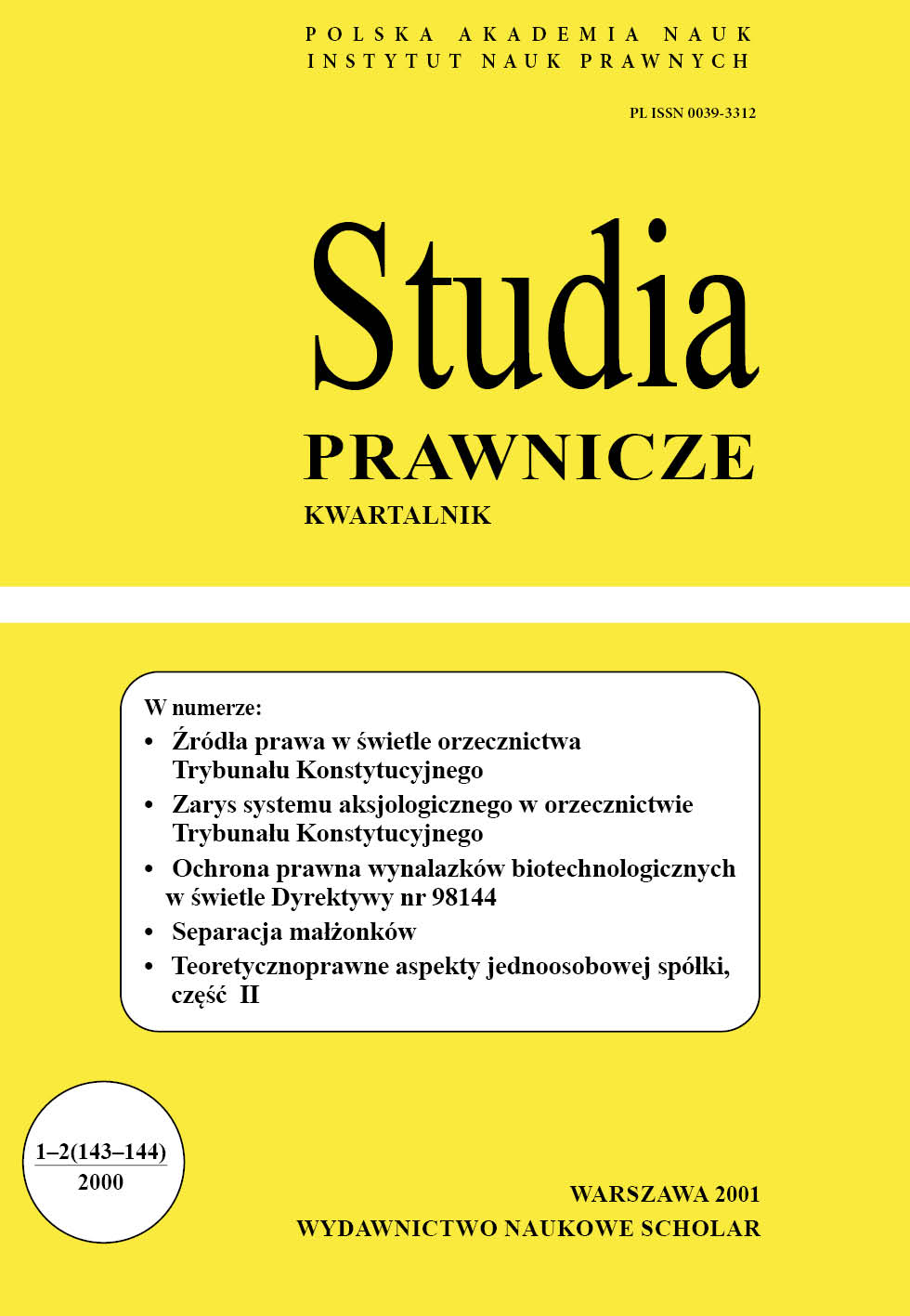Ochrona prawna wynalazków biotechnologicznych w świetle Dyrektywy nr 98/44 z dnia 6 czerwca 1998 r.
Legal protection of biotechnological inventions in light of Directive 98/44 of June 6, 1998
Author(s): Helena Żakowska-HenzlerSubject(s): Law, Constitution, Jurisprudence
Published by: Instytut Nauk Prawnych PAN
Keywords: legal protection; harmonization of the law with the EU; patent law; biotechnological invention
Summary/Abstract: The qualification of a specific idea in the field of biotechnology as an invention follows the same rules that apply to the qualification of solutions in other fields. A biotechnological invention would therefore be any solution in the field of biotechnology that corresponds to the characteristics of an invention as established in the relevant national legal system.By including all the types of inventions listed in the provision of Article 3 of Directive 98/44 within the category of patentable inventions, the possibility of successfully claiming a lack of technical character on the sole ground that the inventions concern living organisms was excluded.An isolated gene or DNA sequence, with a function specified by the applicant, is considered to be a technical solution within the meaning of Article 3 of the Directive 98/44. It is not explicitly stated in the Directive whether the condition for patentability of such an invention is to indicate a biological function, i.e. the function that the DNA sequence in question performs in nature, or a function understood as a way of using such an invention, i.e. its industrial application.Within the meaning of Articles 3 and 5 of Directive 98/44, isolation from the natural environment is the crucial for qualifying biological material existing in nature as inventions. This directive changes the commonly respected principles of patent law by allowing the patenting of scientific discoveries. Indeed, in order for a creation existing in nature (biological material) to qualify as an invention, it is not sufficient to merely ascertain (discover) the existence of such material. Such a discovery is transformed into an invention as soon as, as a result of creative action by the inventor (e.g. isolation, purification), it becomes possible to use biological material existing in nature to meet societal needs.The definition of a microbiological method in Article 2.1 b of Directive 98/44 allows a method of obtaining plants or animals in which microbiological processes are only one element to be considered as microbiological and therefore patentable, as they occur alongside other (technical or natural), non-microbiological means necessary to obtain the desired result.The technical nature of the process of separating elements of the human body as a condition for their patentability means that natural secretions of the body, such as blood, tears, or elements obtained by simple detachment from the body, such as amputated limbs or organs, cannot be the subject of a patent.With regard to both types of patents (regarding the product and manner), the Directive therefore rejects the idea of narrowing the scope of protection to only those products obtained as a direct result of technical human influence.Article 8.2 of Directive 98/44 does not entirely eliminate the doubts as to how far the patent protection for biological material obtained through biological processes should go, i.e. how many generations it should cover. The literal wording of this provision allows one to defend both, the thesis that patent protection is limited to the first generation from material obtained directly by the patented process, i.e. the first generation obtained, for instance, by self-reproduction, and the thesis that it covers all generations of biological material characterised by the features of the patented invention or the indirectly protected product. While the former interpretation seems closer to the traditional view of patent law, the latter more fully takes into account the specificity of inventions involving living matter.Provided for in Article 11 of Directive 98/44 farmer's privileges have the effect of limiting the patent in such a way that the very economic use of the invention becomes permitted without the consent of the patentee and, in certain circumstances, as provided for in the Community Plant Variety Regulation, also without the obligation to pay any remuneration to the patentee.
Journal: Studia Prawnicze
- Issue Year: 2000
- Issue No: 1-2
- Page Range: 103-149
- Page Count: 47
- Language: Polish

